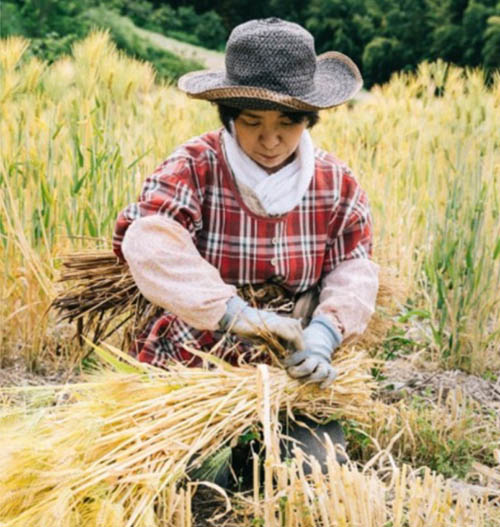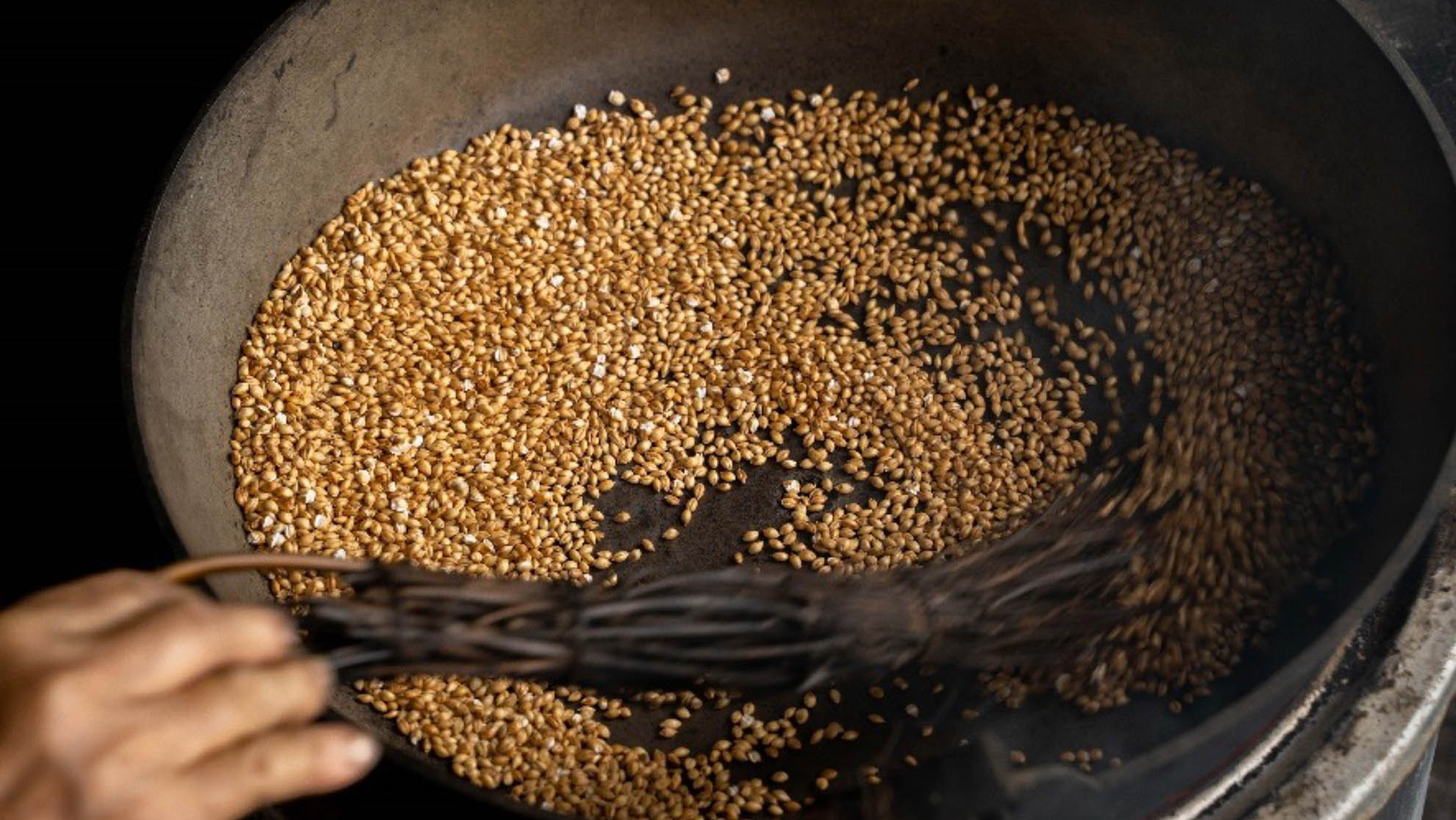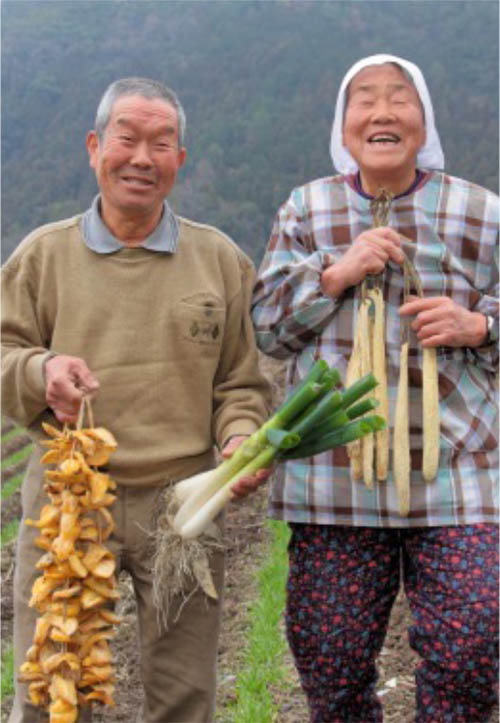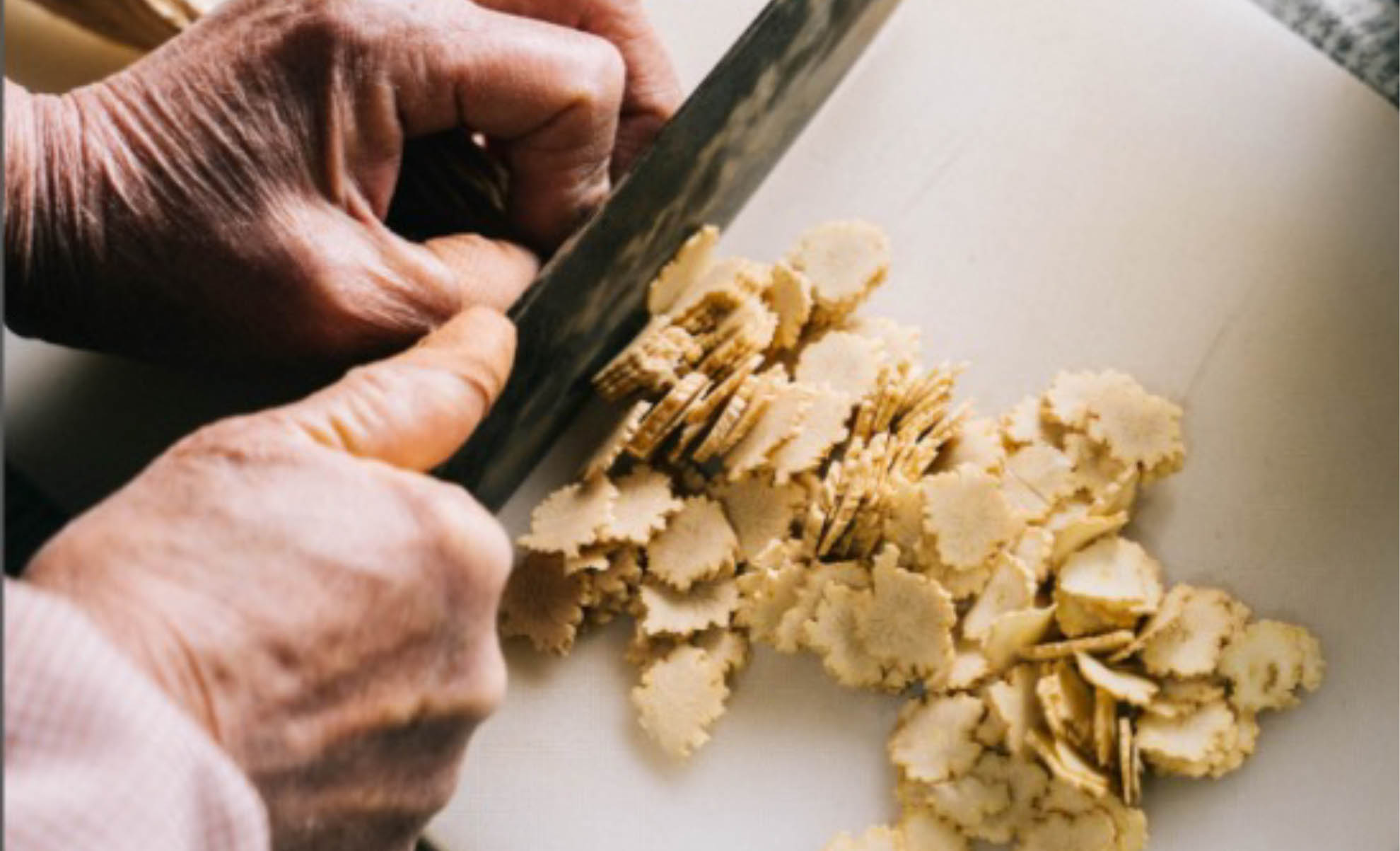

©TOKUSHIMA TSURUGISAN GLOBAL AGRICULTURAL HERITAGE PROMOTION COUNCIL
Nishi-Awa Steep Slope Land Agriculture System, Japan
A model of adapting to weather disasters and social changes under the harsh conditions of steep slope land
THE SYSTEM
The history of the Nishi-Awa Steep Slope Land Agriculture System is said to date back to shifting cultivation in the latter part of the Japanese Jomon period (3000 BCE), predating the introduction of rice growing to Japan.

A farmer ploughing on the Nishi-Awa Steep Slope
©TOKUSHIMA TSURUGISAN GLOBAL AGRICULTURAL HERITAGE PROMOTION COUNCIL
UNDERUTILIZED CROPS AND LOCAL GASTRONOMY ARE THE CORNERSTONE OF FARMERS’ ADAPTATION AND FOOD SECURITY
- Carefully selected through many generations, the region’s grains provide nutritious food for local communities. Farmers in Nishi-Awa cultivate a wide range of indigenous species, such as Japanese barnyard millet, foxtail millet, proso millet, finger millet, great millet and buckwheat.
- The rich diversity of grain, vegetable, and fruit varieties produced on these mountainsides is embedded in the food identity and daily lives of the people.
- Farmers have developed a rich knowledge of how to preserve food so that it is available throughout the harsh winters.
- Traditional agricultural festivals and rituals, such as praying for rain, reinforce cultural identity and strengthen relationships among the local communities involved in sloping land agriculture.
The GIAHS designation has led to the implementation of multipurpose agricultural policies, through the involvement of diverse actors. We hope to further increase the recognition of our site to the world and increase farmers’ income through branding of agricultural products.
Masahito Oshima Tokushima Tsurugisan Global Agricultural Heritage Promotion Council member and Tsurugi town officer
©TOKUSHIMA TSURUGISAN GLOBAL AGRICULTURAL HERITAGE PROMOTION COUNCIL
ACHIEVEMENTS
Since the designation of the Nishi-Awa Steep Slope Land Agriculture System as a GIAHS site in 2018:
- With support from the Tokushima Tsurugisan Global Agricultural Heritage Promotion Council, local agricultural products have been certified with a Nishi-Awa brand to guarantee the value, nature and origin of the products.
- The Iya Valley production cooperative was organized in 2016 by local citizens. They reclaimed abandoned farmland and started small-scale commercial millet production. The activity links youth, urban citizens, the private sector, non-governmental organizations (NGOs), non-profit organizations (NPOs) and universities.

We make almost everything, as farmers in Japan are said to make “one hundred products”. Everything that is produced here is so delicious, from cabbages to carrots! It is important to for the young generation to be interested in agriculture, and to inherit this wonderful legacy.
Hamako Isogai Local farmer from Tsurugi town area
The Tokushima Tsurugisan cuisine consists of many local crops used for cooking
TOKUSHIMA TSURUGISAN GLOBAL AGRICULTURAL HERITAGE PROMOTION COUNCIL
- In 2021, six traditional grains (soba, kokibi, takakibi, awa, hie, and yatsumata) from the Iya Valley were registered by the Slow Food Ark of Taste.1
- The community-organized cooking classes focused on traditional recipes featuring local produce. The classes targeted stakeholders such as agritourism hosts, restaurant owners and young people.
- Rural tourism has been recognized as a key component in promoting understanding of GIAHS, through direct experience of farmers’ lives, their unique techniques, agricultural tradition, biodiversity, landscape, and gastronomy.
LEARN MORE
Steep Slope Land Agriculture System in Nishi Awa
RESOURCES
Asia and the Pacific | Globally Important Agricultural Heritage Systems (GIAHS) | Food and Agriculture Organization of the United Nations | GIAHS | Food and Agriculture Organization of the United Nations (fao.org)

